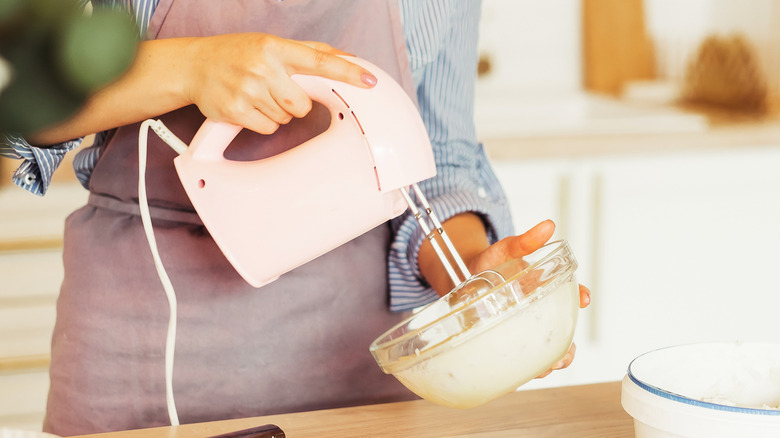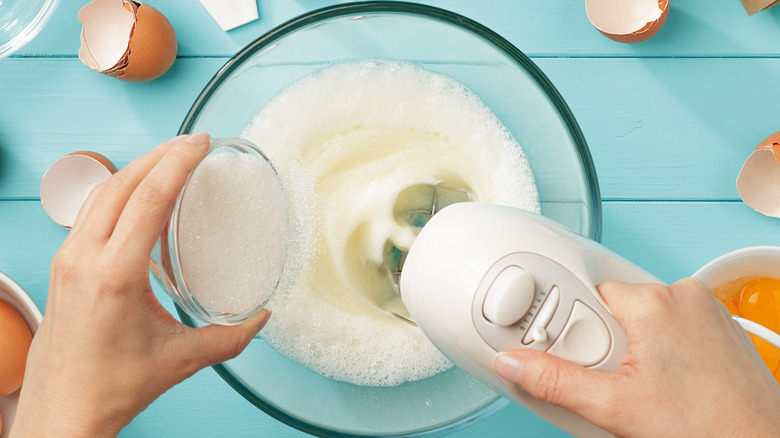You've Been Using Your Hand Mixer Wrong This Entire Time
If you're going to mix batter, it's the norm to pull out a hand mixer. Before this convenient appliance was readily available, chefs were accustomed to different methods of making cakes and cookies. Per Baking Nook, cooks would and still can beat the ingredients using a wooden spoon or a rubber spatula. This method of using a rubber spatula is especially useful for adding egg yolks into cake batter since it prevents clumping. Other alternatives include whisking to incorporate air or whipping, which is much more grueling than other options.
Fortunately, these methods aren't usually necessary. In 1856, the first hand mixer was introduced in Baltimore, Maryland, and an 1857 version followed shortly behind it, though it's not as similar to those used today (via Time Toast). In 1922, KitchenAid released the first electric hand mixer, and 78 years later, the brand dropped the same mixer in a wide array of colors, which is the version you're most likely to find in modern-day kitchens. While a KitchenAid may seem easy to use, you'll be surprised to learn you've been operating it the wrong way.
Spin the bowl, not the mixer
Spoiler alert: This method has nothing to do with the mixer itself but what you mix the batter in. If you're a baker, you probably know that you'll need a bowl for the ingredients — but how you use it is critical. According to BuzzFeed, when mixing thick batters, you should spin the bowl rather than the mixer.
By opting to spin the bowl instead of the mixer, you're putting less strain on your wrist and exerting less energy. According to Michigan Surgery Specialists, P.C., improper hand positioning while cooking can be a major cause of carpal tunnel syndrome. Gripping kitchen tools too tightly can cause inflammation, so it's essential to take breaks if you're a chef in a large bakery or restaurant. Although this tip may seem small, the benefits will improve the health of your wrists and, hopefully, the blend of your well-mixed bowl of ingredients.

